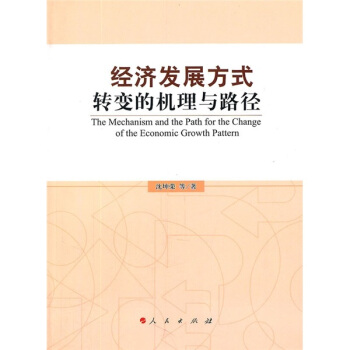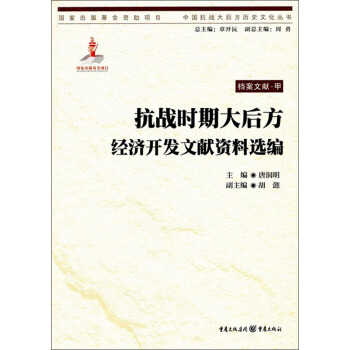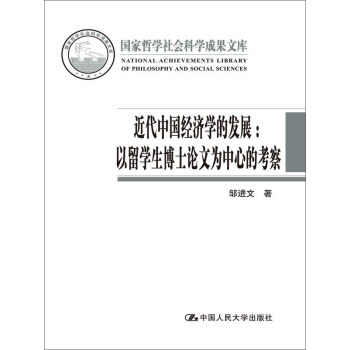![公共管理学经典教材原版影印丛书:政府预算(理论、过程和政治)(第3版) [Government Budgeting Theory, Process, and Politics Third Editoion]](https://pic.tinynews.org/10476558/3bafae83-26bc-43c9-a6f8-66812be23c6b.jpg)

具体描述
编辑推荐
该书是一本关于政府预算的理论和实践的经典文章的汇集,它是经典的,它包括了所有学习预算的学生应该反复阅读的名篇,它涵盖如此广泛,以致任何的复杂的课题都可以找到;而且原版书有助于研究者外语能力的普遍提高,而且拥有译文书不可替代的真实性和全面性。 如果哪位教授没有用这本书中的一些或所有的文章来指导他的学生,那么他就是失职的。内容简介
本教材是美国政府实施预算财政以来,关于政府预算的理论和实践的经典文章的汇集。书中重点讨论了四大问题:预算理论发展的历史,也即预算改革的思想脉络;预算与政府内部的关系;作为民主的手段预算是如何发挥作用的;预算的体系及其管理。每个问题都有详实的背景介绍。《公共管理学经典教材原版影印丛书:政府预算(理论、过程和政治)(第3版)》篇幅宏大,总共43篇文章,堪称经典与现代的完美结合,它向学生介绍了公共预算理论的历史和现代的基础。其中有14篇是本版新增篇目,它们代表了公共预算的发展趋势。在《公共管理学经典教材原版影印丛书:政府预算(理论、过程和政治)(第3版)》的附录部分特别增补了斯坦利·柯林德的《作为第二种语言的联邦预算》和美国国会预算办公室的《公共预算的长期展望》,它们是理解公共预算的不可估量的基础读本。
作者简介
艾伯特·海德:美国华盛顿州布鲁金斯公共政策教育中心高级顾问。曾在美国匹兹堡大学、旧金山州立大学、休斯顿大学、印第安纳大学等学校执教。他还曾供职于美国国务院,是纽约州立法委员会经费审查的高级助理。他与人合著了《政府的人事管理》第5版和《公共行政经典》。目录
PrefacePart Ⅰ The Development of Budgeting and Budget Theory:The Threads of Budget Reform
1 Evolution of the Budget Idea in the United States
2 The Movement for Budgetary Reform in the States
3 The lack of a Budgetary Theory
4 Toward a Theory of Budgeting
5 Political Implications of Budgetary Reform
6 The Road to PPB:The Stages of Budget Reform
7 The Continuing Need for Budget Reform
8 Budget Theory and Budget Practice:How Good the Fit?
9 Processes,Policies,and Power:Budget Reform
10 Strategic Budgeting
11 Political Implications of Budget Reform:A Retrospective
12 The Evolution of Federal Budgeting:From Surplus to Deficit to Surplus
Part Ⅱ Budgeting and Intragovernmental Relations:An Instrument for Correlating legislative and Executive Action
13 The Power of the Purse:Congressional Participation
14 The First Decade of the Congressional Budget Act:legislative Imitation and Adaptation in Budgeting
15 Deficit Politics and Constitutional Government:The Impact of Gramm-Rudman-Hollings
16 Courts and Public Purse Strings:Have Portraits of Budgeting Missed Something?
17 The Executive Budget:An Idea Whose Time Has Passed
18 Mission,Driven,Results,Oriented Budgeting:Fiscai Administration and the New Public Management
19 Biennial Budgeting in the Federal Government
20 The Federal line—Item Veto:What Is It and What Will It Do?
21 State Item-Veto legal Issues in the l990s
Part Ⅲ Budgeting,Economics,and Popular Control:An Instrument of Democracy
22 Why the Government Budget Is Too Small in a Democracy
23 Why Does Government Grow?
24 A Reflection on Bureaucracy and Representative Government
25 Participatory Democracy and Budgeting:The Effects of Proposition l3
26 Common Issues for Voucher Programs
27 The Growing Fiscal and Economic Importance of State and l0cal Governments
28 lessons for the Future
29 The Fiscal Agenda of the States to the Year 2000
30 A Theoretical Analysis of the Case for a Balanced Budget Amendment
31 The Federal Budget and the Nations Economic Health
32 Debunking the Conventional Wisdom in Economic Policy
33 How Big Is the Prospective Budget Surplus?
Part Ⅳ Budgeting Systems and Management:An Instrument for Securing Administrative Efficiency and Economy
34 Performance Budgeting in Government
35 What Program Budgeting Is and Is Not
36 Planning and Budgeting:Whos on First?
37 Introduction to Zero-Base Budgeting
38 Organizational Decline and Cutback Management
39 Govemmental Financial Management at The Crossroads:The Choice IS Between Reactive and Proactive Financial Management
40 Using Performance Measures for Federal Budgeting:Proposals and Prospects
41 Implementing PBB:Conflicting Views of Success
42 Activity-Based Costing in Government:Possibilities and Pitfalls
43 Budget Issues:Effective Oversight and Budget Discipline Are Essential-Even in a Time of Surplus
Appendix A The Federal Budget as a Second language Stanley Collender
Appendix B The long-Term Budget Outlook Report 0f the U.S.Congressional Budget Office
精彩书摘
The Development of Budgetingand Budget Theory: The Threads of Budget Reform
Budgets are not merely affairs of arithmetic, but in a thousand ways go to the root of pros perity for individuals, the relation of classes, and the strength of kingdoms.
—Gladstone
Budgeting is, and always has been, the single most important decision-making process in any governmental organization. The budget itself is a governments most important reference document. In their increasingly voluminous and complex formats, budgets simultaneously record policy decision outcomes; cite policy priorities as well as program goals and objectives; delineate governments total service effort; and measure its performance, impact, and overall effectiveness.
The Dimensions of Budgeting
A public budget has four basic dimensions. First, it is a political instrument that allocates scarce public resources among the social and economic needs of a jurisdiction. Second, a budget is a managerial or administrative instrument, or both. It specifies the ways and means of providing public programs and services; it establishes the costs or criteria or both by which activities are evaluated for their efficiency and effectiveness. It is the budgeting process that ensures that all the programs and activities of a jurisdiction will be reviewed or evaluated at least once during each year (or cycle). Third, a budget is an economic instrument that directs a nations, a states, and even a municipalitys economic growth, its investments, and its development. At the national, state, and regional levels, government budgets are primary instruments for evaluating redistribution of income, stimulating economic growth and development, promoting full employment, combating inflation, and maintaining economic stability. Fourth, a budget is an accounting (now called simply financial management) instrument that holds government officials responsible for both the expenditures and revenues of the programs with which they have been entrusted and that informs the public of a governments fiscal integrity and discipline.
Over the past decade, it has become more and more apparent that the interconnections of these dimensions are vital. For example, the premise of the financial management dimension is to hold governments accountable in the aggregate. After all, the basic concept of a budget implies that a ceiling or a spending limitation exists, which literally requires governments to live within their means. Yet, the pervasive and decades-old federal budget deficit might lead one to ask how the very instrument designed to ensure balanced spending and funding decisions came to be viewed as the major force in wrecking that balance.
It was not for lack of effort. Since the late 1970s, Congress and six presidents from Nixon to Clinton have waged veritable budget warfare over controlling spending and changing taxes
前言/序言
自20世纪80年代恢复以来,行政管理学在我国经历了十多年的摸索和积累期,世纪之交终于呈现出飞跃式发展的态势:行政管理学博士点相继设立,公共管理获得一级学科的地位,公共管理专业硕士学位(MPA)教育开始启动且发展迅猛,开设行政管理本科专业的大专院校达到130家,公共事业管理本科专业则突破了300家,加上党校、行政学院公共管理教研机构的大量设立,说公共管理是2l世纪初我国发展最迅猛的学科并不夸张。学科飞跃式发展的另一重要标志是新领域的开拓和知识的积累及其快速更新。国家自然科学基金委员会对与宏观管理相关的117种外文期刊进行的文献计量研究表明:“公共管理理论与方法是1994—2004年间国外关注最多的领域。其中,有关公共管理基本理论与方法的论文数占到了全部论文总量的44.6%。”对中国期刊网77种核心期刊的文献计量学分析的结果显示,“自1994年至2003年的十年间,关于公共管理基本理论与方法方面的论文增长迅速,从1994年的554篇,上升到2003年的1934篇,增幅达到3倍以上”。但在总量上仅占全部论文总量的4.59%,与国外的同类研究相比呈现出明显的差距(国家自然科学基金会管理科学部:《宏观管理与政策学科“十一五”发展战略研究报告》)。
系统了解和追踪国外的新理论和新方法,并在批判的基础上加以消化和吸收,是学科知识积累和更新的重要环节之一。进入21世纪后,我国对西方公共管理著作的翻译出版结束了零星分散的状态,呈现出系统化和细分化同时并进的势头。中国人民大学出版社的《公共行政与公共管理经典译丛》和《公共政策经典译丛》,华夏出版社的《政治学与行政管理学译丛》,上海三联书店的《制度分析与公共政策译丛》,中国青年出版社的《公共管理译丛》等,都对学科发展和政府管理现代化产生了积极的影响。北京大学出版社《公共管理学经典教材原版影印丛书》的出版值得庆贺!
原版书的系列化出版对学科发展的意义至少有以下方面:(1)有助于研究者外语能力的普遍提高。长期以来,阅读外文图书对我国学者来说近乎一种特权,纵有毅力和热情,但难以承受的价格、少得可怜的存本或繁琐的借阅程序令人望而却步。影印原版书无疑有助于克服这一障碍。(2)推动翻译出版的规范化和翻译质量的持续提高。许多学者谈到这样的经历:阅读译文时怎么也不明白的东西,翻阅原著就清楚了。这固然和不同语言之间的“通约度”有关,也不能否认翻译质量的参差不齐。在原版书“稀缺”的情况下,翻译质量的同行评价和监督机制会因为“信息不对称”而失灵,影印原版书在这方面将大有裨益。
用户评价
作为一名多年从事财政审计工作的专业人士,我对《政府预算》这本书的专业性和前瞻性感到非常钦佩。它提供了一个非常宏观且深入的视角来审视政府预算的各个环节。书中对预算理论的梳理非常系统,从古典经济学到新公共管理,各种理论的演进和演变都解释得清晰明了。但最吸引我的是它对预算过程和政治因素结合的分析。我经常在审计中发现预算执行中的各种问题,但往往难以深入探究其背后的深层原因。这本书则恰恰填补了这一空白。例如,书中关于“权力预算”和“官僚政治”对预算决策的影响分析,让我对自己工作中遇到的某些“解释不通”的现象有了豁然开朗的感觉。作者详细阐述了在预算制定和执行过程中,不同官员、不同部门之间的信息不对称、利益冲突以及个人政治目标如何深刻地影响最终的预算结果。这种将微观的预算操作与宏观的政治环境相结合的分析方法,对于我们理解和规范政府预算行为,提升财政资金的使用效率,具有极其重要的指导意义。
评分这本《政府预算》绝对是我近期读过的最有深度的财政学书籍之一,我是在研究地方政府的财政收支过程中偶然接触到它的。这本书的标题虽然听起来有些学术,但内容却远比我想象的要生动和实用。它不仅仅罗列了各种预算编制的流程和方法,更深入地探讨了预算背后隐藏的政治博弈和决策过程。我尤其对书中关于“增量主义”和“零基预算”的对比分析印象深刻,作者通过大量案例,细致地展现了不同预算方法在实际操作中的优劣以及它们如何受到政治因素的影响。比如,在某个章节中,作者详细描述了某市在进行年度预算调整时,不同部门之间如何为了争取有限的财政资源而展开激烈的游说和谈判,这让我第一次直观地感受到预算编制并非冷冰冰的数字游戏,而是一个充满权力斗争和利益分配的复杂过程。此外,书中对预算公开和问责制度的探讨也极具启发性,它阐述了如何通过有效的预算监督来提升政府财政的透明度和公信力,这对于我们当前追求的廉洁高效的公共服务体系有着重要的借鉴意义。总的来说,这本书为我理解政府运作的“幕后”机制打开了一扇窗,让我对公共财政管理有了更全面、更深刻的认识。
评分我是一名公共政策专业的学生,在学习过程中,老师推荐了这本《政府预算》。起初,我以为这只是一本枯燥的教科书,但事实证明我大错特错了。这本书的叙述方式非常引人入胜,它将复杂的理论知识巧妙地融入到具体的案例分析之中。让我印象最深刻的是关于“决策碎片化”和“利益集团影响”的部分。作者通过层层递进的分析,揭示了在预算编制过程中,分散的决策权和强大的利益集团是如何共同作用,导致预算的效率低下和资源配置的扭曲。书中提到的一个例子,关于某个国家在进行基础设施项目预算审批时,由于多个部门的互相掣肘以及特定行业游说团体的强大影响力,导致一个原本需求迫切的项目迟迟无法启动,甚至预算一再膨胀,最终成为一个资源浪费的典型。这种深入的剖析让我意识到了制度设计和改革的重要性,也让我明白了为什么很多看似合理的公共政策最终难以落地。这本书不仅仅是关于预算本身,更是关于如何理解和改善公共管理体系的深度思考,对于任何对公共事务感兴趣的人来说,都是一本不可多得的读物。
评分这本书《政府预算》的出版,无疑为我这样对公共财政管理领域深度探索的读者提供了一本不可多得的参考。它不仅仅是一本教材,更像是一位经验丰富的智者,娓娓道来关于政府预算的方方面面。我特别被书中对于“绩效预算”和“民主问责”的探讨所吸引。作者并没有停留在理论层面,而是结合了大量的跨国界、跨领域的实践案例,生动地展示了如何在预算过程中引入绩效评估,以及如何通过强化民主问责来提升政府财政的透明度和效率。我印象深刻的是书中对于某个国家在推行绩效预算改革时所遇到的阻力以及最终取得的成效的详细描述。作者分析了改革过程中,来自官僚体系内部的抵触情绪,以及如何通过公众参与和媒体监督来克服这些困难。这本书让我对如何构建一个更加理性、高效、负责任的政府预算体系有了更清晰的认识,也激发了我对如何将这些理念应用于实际工作中进行思考。
评分我是一名对社会科学研究充满好奇的普通读者,在一次偶然的机会下,我在书店里翻阅了这本《政府预算》。最初吸引我的是“政治”这个词,因为它让我觉得这本书可能不仅仅是关于枯燥的数字。果不其然,这本书的内容远超我的预期。它并没有用很多晦涩的专业术语,而是通过清晰的逻辑和生动的语言,为我描绘了一幅政府预算的“全景图”。我尤其喜欢书中关于“预算的象征意义”和“政治博弈中的预算策略”的讨论。作者认为,预算不仅仅是资源的分配工具,更是一种政治沟通和权力展示的手段。在书中,我看到了不同政治派别如何利用预算来表达自己的政治主张,如何通过预算的增减来影响公众的认知和支持。例如,书中举了一个关于地方政府如何通过增加在特定民生项目上的预算,来回应选民关切并争取连任的例子,这让我深刻体会到预算的背后,隐藏着多么复杂的社会心理和政治考量。这本书让我意识到,理解政府预算,就是理解政治运作的一个重要切入点。
相关图书
本站所有内容均为互联网搜索引擎提供的公开搜索信息,本站不存储任何数据与内容,任何内容与数据均与本站无关,如有需要请联系相关搜索引擎包括但不限于百度,google,bing,sogou 等
© 2026 book.idnshop.cc All Rights Reserved. 静思书屋 版权所有







![中国战略性新兴产业研究与发展:智能电网 [R&D of China's Strategic New Industries: Smart Grid] pdf epub mobi 电子书 下载](https://pic.tinynews.org/11331580/rBEhWlJbtxMIAAAAAAOv2XSGp7EAAEIIwOPaKAAA6_x124.jpg)


![区域政策与产业空间分布 [Regional Policies and Spatial Distribution of Industry] pdf epub mobi 电子书 下载](https://pic.tinynews.org/11720107/55a39646N4ef9a754.jpg)



![转型期中国集体协商的类型化与制度构建 [Typology And Institutional Construction Of Collective Consultation In Chinese Transition] pdf epub mobi 电子书 下载](https://pic.tinynews.org/11962701/57bd615dN76f1c431.jpg)





![审计名著译丛(第一辑)·政府审计的政治经济分析:拉丁美洲及其他新兴经济体的财政治理和法治 [The Political Economy of Government Auditing: Financial Governance and the Rule of Law in Latin America and Beyond] pdf epub mobi 电子书 下载](https://pic.tinynews.org/12057503/58e62247N33594f0d.jpg)